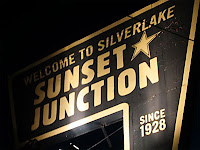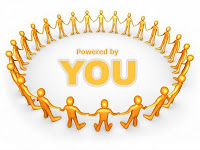It's time for another excerpt from
Music 3.0: A Survival Guide For Making Music In The Internet Age. This time it's about how social media can not only make someone a star, but a superstar.
The first socially-made superstar was actually
Justin Bieber, and before you recoil in horror (I know you Bieber-haters are out there), remember that this isn't an endorsement of his music, it's about how he and a number of others did it in the new age we live in -
Music 3.0.
-----------------
"To many Justin Bieber is just another example of a short-on-substance teen idol, but if you forget about the artist and look at how he was discovered and how his career was built, you’ll find the perfect example of how social media can work in in a big way in Music 3.0.
Justin Bieber was the first artist made by YouTube. He was discovered there, and has prospered there almost more than any artist other than Lady Gaga. In fact, Bieber’s song “Baby” had more than 500 million views alone and all of his videos together equal more than 1.5 billion total views (which is number one of all musical artists) as of the writing of this book.
His career began when he was captured on a cellphone video as he was busking outside the Avon Theatre in Stratford, Ontario (population 32,000) hoping to get noticed, a moment that has since been shared some 3.2 million times on YouTube. In just a little over 9 months, Bieber went from playing to 40 people at an outdoor water park in Poughkeepsie to headlining 86 sold out arena shows in 2010, all this while moving over 10 million albums worldwide over 14 months, opening his first movie on 3,000-plus screens with box-office earnings that topped $20 million, and inspiring hundreds of licensed merchandise items.
More than that, Bieber is one of the first artists to use social media to achieve superstardom, utilizing all forms of social media to capitalize on his success with over 9 million Twitter followers and 25 million Facebook fans. In fact, he is #1 in the top 100 Twitters and accounts for about 3% of all Twitter traffic as of the writing of this book in Spring 2011.
Bieber is not the only M3.0 superstar to fully utilize social media though; Lady Gaga, Eminem, Rhianna, Shikira, Katy Perry, Linken Park, L’ll Wayne, Taylor Swift and Akon all have 20+ million Facebook fans according to Famecount.com. Lady Gaga, Shakira, Katy Perry, Britney Spears, Taylor Swift, and Selena Gomez all have more than 5 million Twitter followers. All of the these stars have more than 100 million YouTube views, with several over or near a billion.
It’s a fact that the superstar of today cannot reach that stage illustrious stage without a large social media presence. While Twitter and Facebook strengthen the connection with the fan, YouTube acts not only as a the major music delivery system, but now plays a huge part in music discovery as well. Even though superstars have the resources to better craft a message and media campaign than a new act just starting out, social media is essential to artists at all levels in order to prosper."
-----------------------
Some of the numbers above aren't up to date since the book was written 6 months ago, but the numbers don't matter as much as the concept (they're still enormous). The point is that social media does indeed make it possible to go from a nobody to a superstar in a matter of months under the right circumstances. As you can see, it's been done.
To read additional excerpts from this and my other books, go to bobbyowsinski.com.
-----------------------------------
You should follow me on Twitter for daily news and updates on production and the music business.





